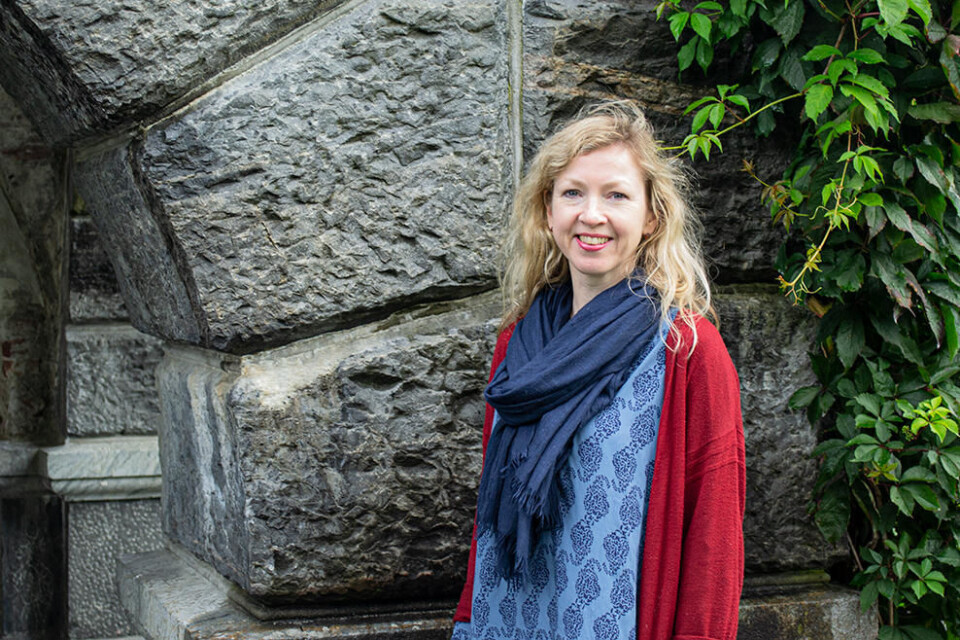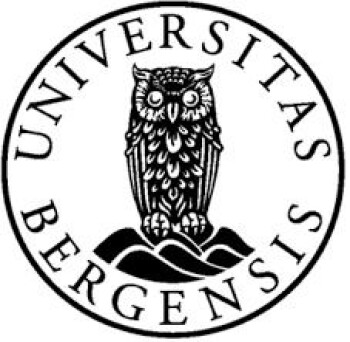This article was produced and financed by the University of Bergen - read more

Manuscripts that link Europe together
“I never tire of studying medieval manuscripts. Even though my source material is Norwegian, it is also fundamentally international. This gives the research a broader perspective and forces international cooperation.”
Åslaug Ommundsen is a Professor of Medieval Latin philology and Academic Director of the Medieval Research Cluster at the University of Bergen. In recent years, she has researched medieval manuscript culture in Norway, primarily by studying manuscript fragments in Latin.
Personal, beautiful and exciting
It is more than twenty years since Professor Ommundsen made the decision to travel to Rome to study medieval manuscripts. This became the start of what we now recognise as being an impressive research career.
“I still remember the feeling I had when I was sitting in the Vatican Library and leafing through a book that was more than a thousand years old. The thought that this book had been in direct contact with the hands of people who lived in a completely different time was incredibly fascinating.”
Professor Ommundsen wrote her master’s thesis on a manuscript that was penned at the court of Charlemagne at the end of the 8th century. The manuscript is today stored in the renowned library with its rich traditions.
There are many aspects of manuscripts worth studying, which means that Professor Ommundsen never gets tired of immersing herself in the material.
“Hand-written books are very personal. The actual handwriting itself tells us a great deal about the person who penned the content. It can tell us about where the writer came from, because the written expression varies from region to region. Handwriting also reveals how technically proficient and experienced the writer is and of course how well he or she masters Latin. Manuscripts are a direct source to our cultural history, not just through the content of the text, but also in the form of being a physical product of the past. There is considerable variety, from the most basic books to art in miniature,” Professor Ommundsen says.
The hunt for Norwegian manuscripts
When she had completed the work on her master’s thesis, she then started to investigate whether similar materials existed in Norway.
“I asked around a bit but was told that what did exist was not worth spending time on,” Professor Ommundsen says. However, she did not give up so easily. While she continued her search, she received a tip-off to check the fragments in the National Archives of Norway.
“This turned out to be an excellent idea. Even though Norwegian medieval manuscripts have largely been lost, there were still thousands of small fragments from medieval books that had served as links between learnedreligious communities in Norway and the rest of Europe. I was ecstatic, because I now realised that I had found material that led to not only one, but many different research projects,” says Professor Ommundsen enthusiastically.
Important sources of cultural history
She decided to focus her work on determining what the fragments could tell us about the contact that had existed between Norway and Europe, and the cultural impact in the period from 1100 to 1300.
Professor Ommundsen applied for a grant from the Trond Mohn Foundation and was successful.
“The grant from Trond Mohn enabled me to build up a research team of four people who could work full time with the research project: From fragments to book history (2012-2017).”
Professor Ommundsen and her team have distinguished themselves as important players within international fragment studies. They have worked to make the Norwegian fragments known and available outside of the country’s borders. Part of this has been to experiment with digital reconstruction of medieval manuscripts by piecing fragments together into browse files. A browse file can consist of between 10 and 50 small pieces and it is self-evident that this work is time-consuming. The browse files are uploaded and combined with pictures, video clips and other exciting material on the website fragment.uib.no.
BROWSE FILES: Åslaug Ommundsen explains how she pieces book fragments together into browse files. (Copyright: UiB)
Fragments for the future
One important reason that many of the fragments survived was that they were often used during the 17th century as binders for account books. The pages in medieval books consisted of solid parchment made from animal hides that could withstand reuse.
“Irrespective of how many pieces we connect together, the puzzle will never be finished. However, we are already seeing the outlines of both contact networks and local cooperation, whereby imported and local books were used side-by-side. Some writers closely modelled their work on foreign influences, while others found their own style. Some preferred to work alone, while others worked together in groups.”
The fragments are from books belonging to different genres: liturgy, sacred texts, theology, history, natural sciences, medicine and law. These particularly reveal the close links to England and France, but also other parts of Europe.
“The book fragments strongly confirm the close contact with England during the medieval period. The English were important during the Christianisation of Norway, and played an important role in the establishment of monasteries in this country. At the same time, Synnøve Myking’s thesis on fragments from French books shows that we have a great deal to gain from studying fragments from books brought to Norway from other parts of Europe, such as France. The best means of studying the medieval network is to do as they did, i.e. establish an international network,” Professor Ommundsen says.
“Collaborating with others outside of Norway’s borders is a prerequisite for progressing with this material. While most other countries are better off than we are due to them having large collections of manuscripts, we also see that major fragment projects are developing in other parts of Europe with ambitions for the future. This enables us to share both experience and source material. It’s about keeping up!”
About 99% of the Norwegian fragments have now been photographed and made available through various databases.
Young and optimistic academic community
The project was concluded in spring 2017, but Professor Ommundsen is still working with the fragments. Together with Nordic colleagues, she will now apply for new funds to continue the research through a project collaboration that can look at the Nordic region as a whole.
“The fragments we are working with were kept in administrative centres in Copenhagen and Stockholm, but borders have shifted and some of the archive materials have been sent here and there. It is therefore important to also have a Nordic perspective,” Professor Ommundsen says.
She is in no doubt that the recruitment grant she received through the Trond Mohn Foundation has been of great importance to her development as a researcher and project manager.
“In addition to building up the team here at University of Bergen, I have strengthened the international contact network. The grant is also the direct reason for me being employed in my present position as Professor of Medieval Latin philology at the university.”
Professor Ommundsen considers herself privileged to be part of a young and dynamic academic community within manuscript studies.
“I find it inspiring to work at a university that has a focus on thinking beyond its own borders, through initiatives like the Medieval Research Cluster.”


































